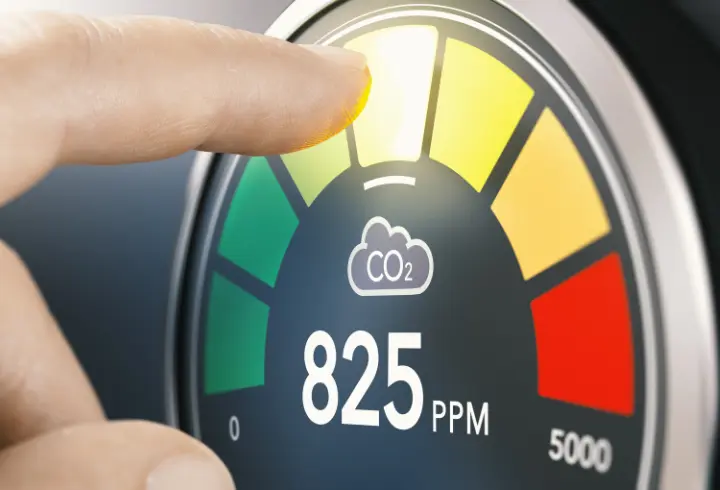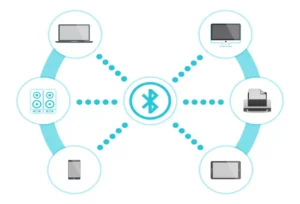The air quality monitoring stations are important tools that can accurately track ambient air pollution levels in cities and regions.
Along with the current climate crisis, air pollution has become a major environmental concern. Since it is a health risk which is why authorities are putting up extensive monitoring networks.
These stations provide air quality data in real time. This enables an understanding of pollution sources, its trends and impact it has.
The system is equipped with specialized sensors and analyzers that measure suspended particles like sulfur dioxide, nitrogen dioxide and other pollutants.
This precise and comprehensive data is further used to create an Air quality Index (AQI) for the particular area or city. The AQI is informative in providing people with data about safe pollution levels in order to mitigate health risks and be precautious.
Granular real-time insights from monitoring stations allows policy makers in governments to devise plans around regulations.
The impacts of climate change are constantly increasing, thereby increasing air pollution as well. These stations are essential tools that track long term air quality trends, making them indispensable.
Purpose and Importance of the Air Quality Monitoring Station
Air quality monitoring stations measure ambient concentrations of major air pollutants like particulate matter, ground-level ozone, sulfur dioxide, nitrogen dioxide and carbon monoxide.
The data collected allows authorities to evaluate air quality trends over time, identify pollution hot spots, pinpoint sources of emissions and determine if air quality meets public health standards.
Air monitoring data ensures policies and controls put in place to improve air quality are working effectively. It also helps communicate risk levels to the public.
Key Components and Technology of the Air Quality Monitoring Station
Stations are equipped with specialized sensors, analyzers and samplers to constantly monitor the surrounding air. Sensors can use laser optics, electrochemical reactions or metal oxide semiconductors to detect target pollutants.
Many stations now use next-generation sensor networks that provide expanded air monitoring capabilities. Stations include weather sensors tracking wind speed, humidity levels and temperature to correlate with pollution data.
Monitoring technology continues to advance with greater sensitivity, portability, accuracy and real-time data connectivity.
Future Outlook and Innovations
As air quality becomes an increasing concern globally, continuous innovations in monitoring technology and data analysis will allow for more widespread and effective tracking of pollution levels.
Governments are expected to invest in expanding air quality monitoring infrastructure across cities and rural areas.
This will provide granular, hyperlocal air quality data to identify pollution hotspots and trends. Additional low-cost sensor networks supplemented by satellite monitoring will offer insights into air pollution patterns.
Emerging sensor technologies like laser-based sensors, remote gas sensors using spectroscopy, and small but highly accurate integrated sensor systems will enable cheaper and more portable monitoring.
These can be deployed through drone-based systems as well for improved spatial coverage. Sensors with machine learning capabilities can also improve selective detection of trace gases.
Integrating Big Data Analytics in Air Quality Monitoring Station
Large volumes of air quality data from disparate sources can be integrated via cloud computing and analyzed using machine learning algorithms.
This will reveal deeper insights into air pollution drivers, forecasting capabilities, effectiveness of interventions, and recommendations for policy directives.
Big data analytics will be crucial for developing strategies to combat climate change as well.
By leveraging these innovations in air quality monitoring infrastructure and analytical capabilities, more informed decisions can be made to reduce pollution exposure, safeguard public health, and build sustainable cities.
Government and public-private partnerships focused on environmental technologies will pave the way for cleaner air.
Closing Thoughts on Air Quality Monitoring Station
Air quality monitoring stations are incredibly essential for communities. They contribute to safeguarding public health and developing cities in a sustainable manner.
Concerns about air pollution are continuing to grow. As a result these monitoring networks have become mandatory tools for governments and environmental agencies.
The real-time local data on air pollution levels from these monitoring stations have enabled authorities to pinpoint emission sources and evaluate whether policies are effective.
They transparently communicate data that is relevant to health risks. This way systems can be placed to respond as quickly as possible.
Innovations in sensor technologies, data analytics and deployment strategies will further develop air quality monitoring procedures.
This system allows interventions and climate change mitigation strategies that are targeted and effective.





